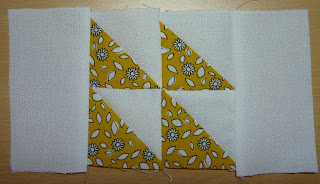Very productive today! Actually, I started this a few days ago but got a bit distracted.
My Kindle is 16.5cm x 11.5cm, so here's what I needed to make this cover:
- Cotton fabric 35cm x 40cm (or two different pieces 30cm x 20cm if you want different pattern on the inside and outside)
- Wadding approx 30cm x 18cm
- Cotton thread
- Sew-on velcro approx 10cm long
- Flat elastic approx 20cm long
Here's a vague diagram of how the fabric and wadding relate to each other and the device:
I was adapting instructions to make a padded bag for a gadget, rather than a cover, so i didn't hem the cotton before I sewed the fabric to the wadding, but it would probably be easier if I had hemmed it first.
Mark lines along the cotton fabric spaced 2cm from each other (if you have a foot you can use as a guide, you don't need to do this although it might help anyway).
Then, you put a layer of cotton fabric on each side of the wadding, and pin all three layers together (if using one big piece of fabric, fold it in half and then put the wadding in the middle).
Using contrasting thread, tack the three layers together with long stitches.
Stitch back and forth along the 2cm spaced lines using your sewing machine (see the picture below). Leave about 3-4cm unquilted at one short edge for you to attach the velcro to.
Check that the piece is big enough to fit around your device once the quilting has been done. (Mine was too short, so I had to add another piece, but the measurements I've given above should be big enough for it).
Trim any spare wadding back to the last line of stitching, and sew the edges together neatly.
Before you attach the elastic to keep the deivce in place, it's probably a good idea to attach the velcro. The piece with the hooks goes on the inside of the cover on the part you didn't quilt (this should be on the half of the cover that will wrap over the front of your device) and then the softer piece can go on the back (behind where the device will be) and it won't catch on your clothes/bag/carpet/etc.
Now it's time to make sure your device won't fall out of its cover. Attach the elastic to the top and bottom of the cover.
My cover has a small flap along the top of the kindle to keep it in place (so one half of the fabric is wider than the other half), or you can just use elastic stretched across the width of the device and stitched at each end.
To keep the bottom of the device in place but still be able to press all the buttons, I stitched a piece of elastic diagonally across each corner:
And the kindle fits in its new snuggly home!
 |
| Open to read |
 |
| Closed to carry about |
 |
| I can take it out of the cover if I need to |


















